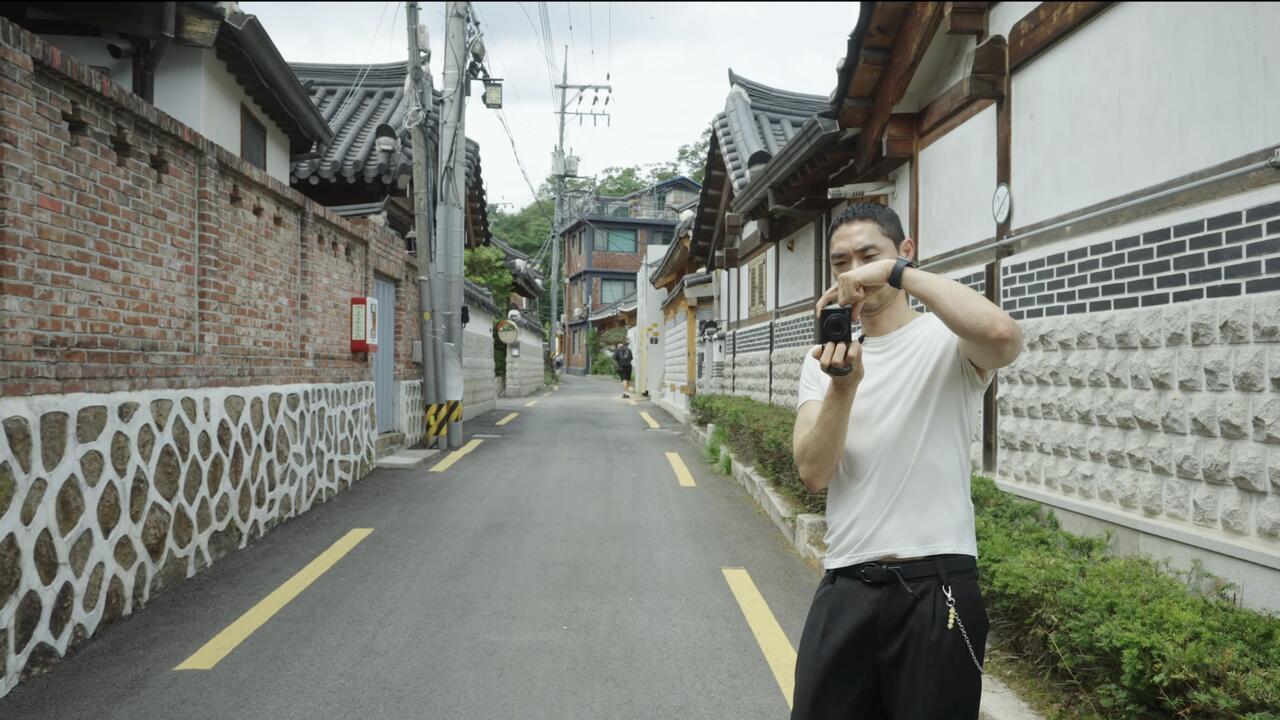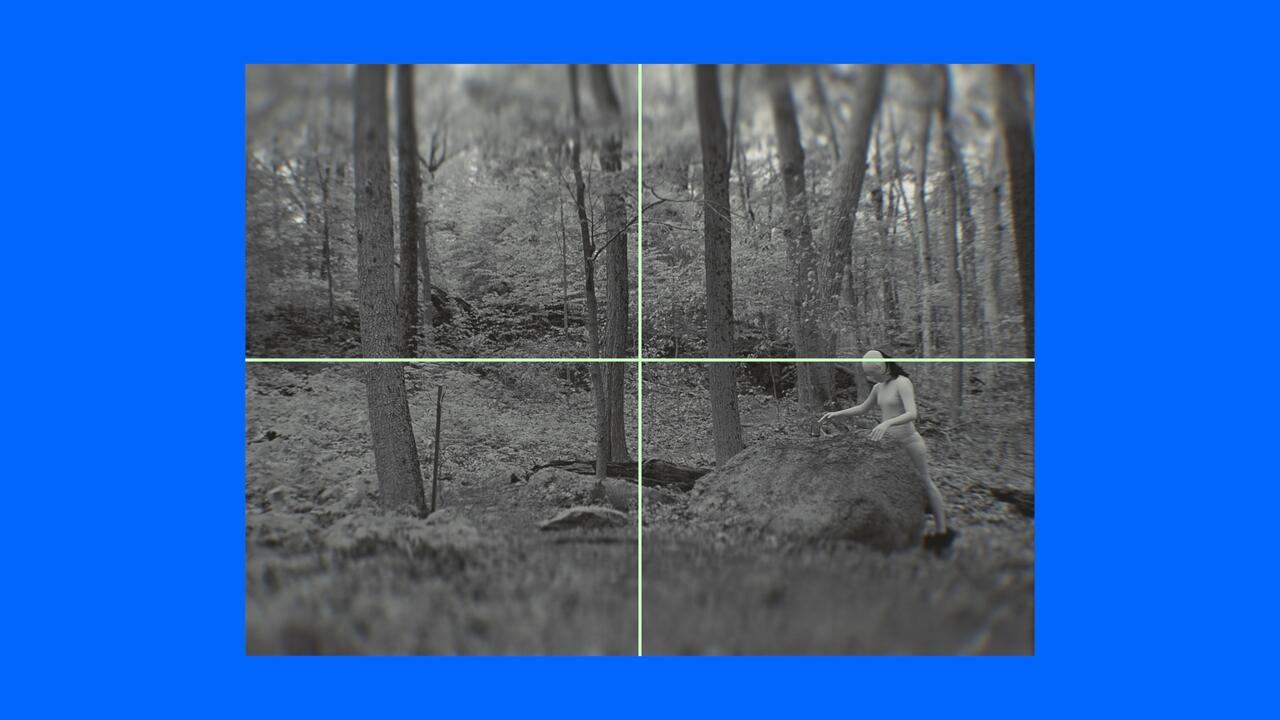Parallel Voices
Carsten Nicolai curates a series of performances and discussions at Siobhan Davies Studios
Carsten Nicolai curates a series of performances and discussions at Siobhan Davies Studios

‘Parallel Voices’, a three-day investigation instigated by pioneering choreographer Siobhan Davies into dance’s relationship with (and to) other cultural forms, made its first appearance in 2007, with guest curator Jonathan Burrows. Primarily a space for debate and discussion, the series has expanded to include live performance, and this year focused for the first time on the intersections between music/sound, art and movement, with Carsten Nicolai in the curator’s role.
Carsten Nicolai and Ryoji Ikeda
As an artist whose work explores the sonic qualities of light, form and colour, or the visual properties of sound, with great subtlety – whether literally, as in Monitor, the motion-sensitive light installation mounted outside the Studios, or in the awareness of process and design one hears in the stark sounds of his musical project Alva Noto – Nicolai is a potentially ideal curator for ‘Parallel Voices’, which was set up by Davies in the spirit of enquiry and collaboration. However, not all of his guests seemed to share the openness of thought and interpretation necessary for any cross-disciplinary discussions or work. After the opening presentation of Ryoji Ikeda’s audiovisual realization of data as sound source (Test Pattern, 2008), the following night’s panel resulted in as many short circuits as it did illuminations.
Carsten Nicolai live in Sheffield (2003)
Perhaps this shouldn’t have been surprising: the post-punk era in which guests Blixa Bargeld and Throbbing Gristle’s Chris Carter and Cosey Fanni Tutti first defined their art might be remembered as barrier-breaking and boundary-pushing, but its legacy of confrontation can easily sour into an attitude of dismissal and intransigence, qualities against which panel host Ben Borthwick of Tate appeared to struggle. There was a reluctance to talk about interdisciplinary or collaborative work – although Bargeld, at first resistant, gave evocative descriptions of his own techniques – and plenty of tired assumptions about ‘trained’ and ‘untrained’ routes into art and music (not least the assumption that improvisation is ‘untrained’). Nicolai, whose early life in former East Germany gave him a unique perspective on the ideas of restriction and control explored by TG and the like, said the least, but later performed a new piece with Bargeld that made use of processed recordings of the debate. Initially I found this as uncomfortable and self-conscious as the preceding discussion, as Bargeld introduced an expected array of vocal tics, tremors and shrieks, but when both musicians settlef into their stride, the sound became unexpectedly intense, Bargeld’s full-throated singing sympathetically met by Nicolai’s dark, surging bass frequencies.

Carsten Nicolai
Friday’s programme had an almost entirely different atmosphere, a fluidity and communicative ease that was a perhaps too-neat parallel with its focus on dance. A performance by Alexandra Gilbert, soundtracked live by Christian Fennesz (who has also made music for Gilbert’s most frequent partner, Dominic Jalet), was mesmerising and disquieting, as Gilbert mirrored the fibrous, alien, yet organic sound of Fennesz’ music in a dance that made use of cloth, hair and a sinister knitted costume/sculpture. As a more frequent attendee of live music than dance, I found the sheer physical proximity of Gilbert exciting, as she hurled her apparently fearless body at the floor, agonizingly sloughing off then resignedly inhabiting her grotesque costume; however, it was the tentative quality of the relationship between dance and music that was most intriguing – moments of odd vulnerability, as when Gilbert stood still and sang, or when Fennesz picked out a naïve figure on acoustic guitar.

Ryoji Ikeda
The panel that followed, chaired by curator and musician Andrew Cannon, with Nicolai, Gilbert, Fennesz and Siobhan Davies herself, sometimes highlighted the danger of over-simplification or reductionism when discussing ‘links’ (the meaning of the ‘Missing Link’ of the festival’s subtitle was debated) or lack of such between different art forms, in the sense that such a conversation has to bypass the diversity within those forms – however, as an exercise in openness and communication between practitioners, it was exemplary. The value of collaboration was stressed, with Fennesz and Nicolai giving examples of their work with Mike Patton, Ryuichi Sakamoto and others.
Christian Fennesz, ‘Black Sea’
But it was Davies, with her many years of experience and inquisitive mindset, who made the greatest impression – not only because she is a charismatic figure, but because she was able to articulate her process better than most. Davies described a new project that will involve collaborators from such unlikely fields as engineering, and ended the event on a firmly inspirational note. Nicolai, on the other hand, remained a quiet figure throughout, appearing to listen to and take on the more forcefully expressed views of his guests. But in this final discussion one sensed that he shared with Davies the sense that all work is somehow work-in-progress, and that the successes and misfires of ‘Parallel Voices’ will provide equally valuable source material for them both.
















